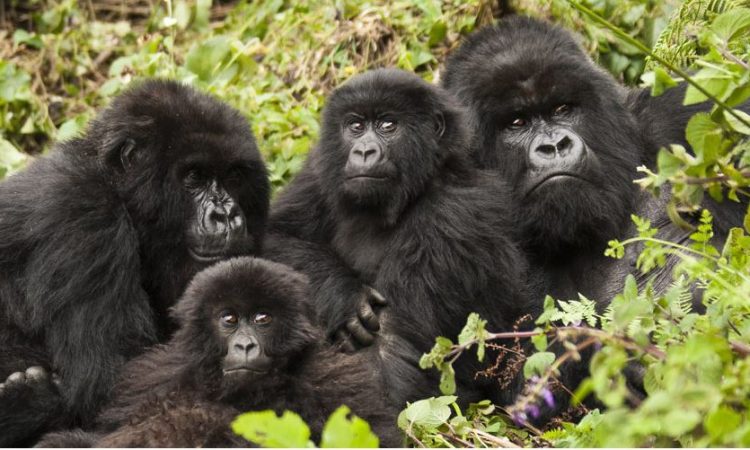 The largest of the great apes, gorillas are stocky animals with broad chests and shoulders, large, human-like hands, and small eyes set into hairless faces. The two gorilla species live in equatorial Africa, separated by about 560 miles of Congo Basin forest. Each has a lowland and upland subspecies.
The largest of the great apes, gorillas are stocky animals with broad chests and shoulders, large, human-like hands, and small eyes set into hairless faces. The two gorilla species live in equatorial Africa, separated by about 560 miles of Congo Basin forest. Each has a lowland and upland subspecies.
While in their natural habits, Gorillas form groups or families. Each family is led by a superior mature male Gorillas called a silver back. The silver back takes the leading role of the entire family and should be strong enough to protect and defend the group in case of any attack.
Gorillas spend most of the day time feeding on fruits, leaves, stems and so on. In other words, Gorillas are herbivorous – feeds on plants.
Gorillas keep moving from areas of scarcity to the areas with plentiful food stuff. The leading role remain in the hands of the silver Back. Gorillas cannot swim naturally, therefore they avoid large bodies of water and rivers. So, Gorillas keep meandering water bodies until they reach the other side and if there is no way of reaching the other side, they remain one side.
When in the forests, Gorillas multiply but at a low rate. Females usually give birth around every 4 years. Usually a single infant is born with twins being rare. There is a 40% mortality rate for newborns which means that an adult female usually only has 1 surviving offspring produced every 6 to 8 years. Therefore many females will only have 2 to 6 offspring in a lifetime.
Gorillas make noise when threatened by predators or humans. The Gorilla Predators include Leopards, elephants, humans and so on.
Infant Gorillas spends most of the day and night time with their mothers for the first 6 months and nurse for about 21/2 to 3 years.
The silver backs are regarded ass the most powerful and aggressive among the gorilla family, but calm with young ones. In case of death of a mother gorillas, the silver back takes care of the infants.
When pregnant, the female Gorilla takes 8.5 months of gestation. Compared to human being, Gorillas give birth at 8.5 months earlier than human at 9 months.
Only silver backs have a right to mate. When other male Gorillas reach adulthood stage, they leave the group to look for female gorillas from other gorilla groups. At the gestation period, its hard to detect a pregnant gorilla because of the huge berry.
